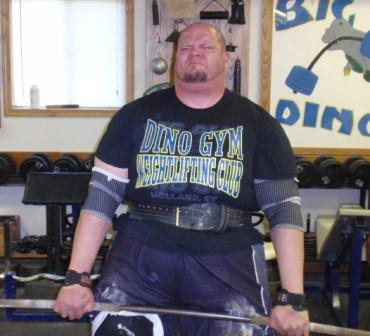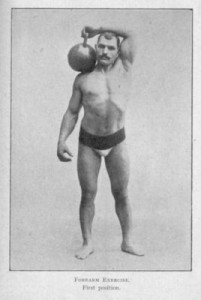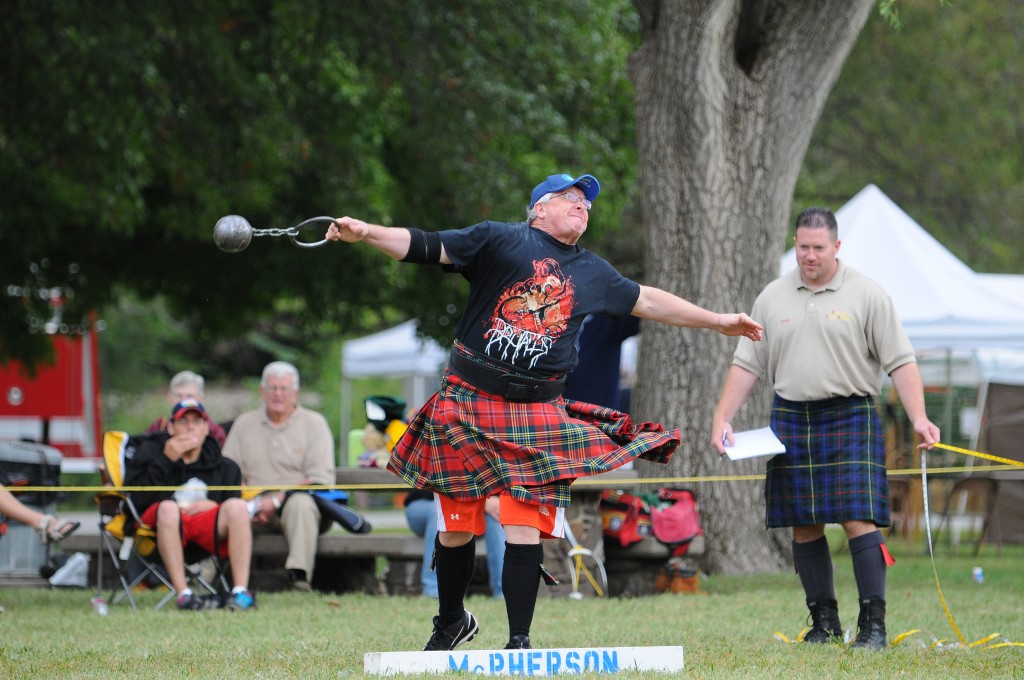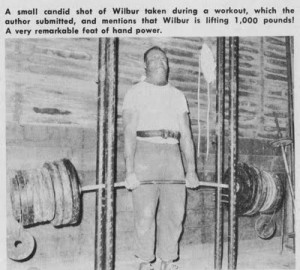by Al Myers
RESULTS of the 2010 IAWA
WORLD POSTAL TEAM CHALLENGE

Scott Tully, of the Dino Gym, posted the highest Individual Total in the IAWA World Team Postal Challenge in helping the Dino Gym to a first place finish.
The 2010 World Team Postal Challenge was a huge success. Ten teams entered the competition, which consisted of each team providing three lifters whose scores were added together for a team point total. The USA had 5 teams, England had 4 teams, and Scotland provided 1 team. This competition is one of three major IAWA events (the World Championships and the Gold Cup being the other two) held each year. The credit for this competition needs to go to our IAWA President Steve Gardner for organizing it and compiling the results. Without Steve’s commitment to the IAWA, we wouldn’t have the opportunities we have and the IAWA wouldn’t be near as strong as it is. We need to give him the thanks he deserves – often the leadership he provides us does not get enough recognition. Thank you Steve for everything you do on behalf of the IAWA!!
RESULTS
Meet Director: Steve Gardner
Officials: three certified officials were used on all lifts
Lifts: Snatch – One Arm, Pinch Grip – 2 hands, Bench Press – Feet in Air, Deadlift – Ciavattone Grip
1. Dino Gym 1 (USA) – 1112.1 points
| Lifter |
Age |
BWT |
Snatch |
Pinch |
Bench |
Dead |
Total |
Points |
| A Myers |
44 |
115.7 |
72.6 R |
62.2 |
154.3 |
200 |
489.1 |
403.3 |
| C Ullom |
38 |
108.4 |
68.1 R |
57.6 |
120.2 |
210 |
456.0 |
370.2 |
| S Tully |
34 |
156.1 |
52.2 R |
75.8 |
167.9 |
200 |
495.9 |
338.6 |
2. Powerhouse 1 (England) – 1039.4 points
| Lifter |
Age |
BWT |
Snatch |
Pinch |
Bench |
Dead |
Total |
Points |
| M Price |
45 |
97.1 |
47.5 R |
50 |
155 |
140 |
392.5 |
358.0 |
| J Gardner |
26 |
89.8 |
52.5 R |
65 |
105 |
180 |
402.5 |
361.7 |
| S Gardner |
53 |
129.7 |
37.5 R |
60 |
110 |
170 |
377.5 |
319.6 |
3. Ambridge VFW (USA) – 1034.8 points
| Lifter |
Age |
BWT |
Snatch |
Pinch |
Bench |
Dead |
Total |
Points |
| A Montini |
83 |
81.8 |
18.2 L |
25.4 |
54.4 |
102 |
200 |
307.3 |
| J McKean |
64 |
74.8 |
24.9 R |
45.9 |
58.9 |
146 |
275.7 |
345.2 |
| S Schmidt |
57 |
114.3 |
50 R |
70 |
105 |
185 |
410 |
382.3 |
4. Dino Gym 2 (USA) – 975.1 points
| Lifter |
Age |
BWT |
Snatch |
Pinch |
Bench |
Dead |
Total |
Points |
| C Cookson |
40 |
124.8 |
59.0 R |
57.6 |
127.0 |
210 |
453.6 |
346.6 |
| D Barnhart |
43 |
131.6 |
43.1 R |
75.8 |
136.1 |
200 |
455.1 |
349.0 |
| R Bletscher |
74 |
98.9 |
20.4 R |
44.0 |
50.0 |
113.4 |
227.8 |
279.5 |
5. Willies Warriors (Scotland) – 973.8 points
| Lifter |
Age |
BWT |
Snatch |
Pinch |
Bench |
Dead |
Total |
Points |
| A Tomlin |
43 |
94.8 |
47.5 R |
55 |
95 |
170 |
367.5 |
333.2 |
| C Ross |
26 |
92.7 |
50 L |
65 |
105 |
160 |
380.0 |
335.2 |
| G Dick |
61 |
130.0 |
42.5 R |
40 |
105 |
150 |
337.5 |
305.4 |
6. Granby Grippers (England) – 968.1 points
| Lifter |
Age |
BWT |
Snatch |
Pinch |
Bench |
Dead |
Total |
Points |
| D Andrews |
14 |
58.8 |
22.5 R |
29.5 |
37.5 |
75 |
164.5 |
232.8 |
| S Andrews |
51 |
70.5 |
50 R |
49.5 |
85 |
130 |
314.5 |
366.4 |
| F Allen |
68 |
89.1 |
35 R |
39.5 |
85 |
150 |
309.5 |
368.9 |
7. Habeckers Gym (USA) – 917.1 points
| Lifter |
Age |
BWT |
Snatch |
Pinch |
Bench |
Dead |
Total |
Points |
| D Habecker |
67 |
86.0 |
30 R |
50 |
92.5 |
140 |
312.5 |
371.3 |
| K Hess |
16 |
136.0 |
40 R |
87.7 |
80 |
145 |
352.7 |
281.7 |
| A Hess |
46 |
140.6 |
35 R |
87.7 |
82.5 |
140 |
345 |
264.1 |
8. Powerhouse 2 (England) – 877.9 points
| Lifter |
Age |
BWT |
Snatch |
Pinch |
Bench |
Dead |
Total |
Points |
| G Saxton |
48 |
113.6 |
37.5 R |
55 |
115 |
160 |
367.5 |
317.5 |
| W Smith |
18 |
134.3 |
45 R |
67.5 |
125 |
170 |
407.5 |
306.5 |
| K Gardner |
51 |
73.2 |
15 R |
40 |
32.5 |
85 |
172.5 |
253.9 |
9. Tiverton WL Club (England) – 701.1 points
| Lifter |
Age |
BWT |
Snatch |
Pinch |
Bench |
Dead |
Total |
Points |
| G Ell |
39 |
85.0 |
42.5 L |
46.4 |
127.5 |
170 |
386.4 |
358.3 |
| M Rattenbury |
48 |
65.0 |
27.5 L |
33.9 |
85 |
140 |
286.4 |
342.8 |
|
|
|
|
|
|
|
|
|
10. Frank’s Gym (USA) – 598.2 points
| Lifter |
Age |
BWT |
Snatch |
Pinch |
Bench |
Dead |
Total |
Points |
| F Ciavattone |
55 |
125.0 |
40 R |
77.5 |
115 |
215 |
447.5 |
392.4 |
| F Ciavattone Jr |
16 |
108.0 |
25 R |
40 |
50 |
115 |
230 |
205.8 |
|
|
|
|
|
|
|
|
|
NOTES: BWT is bodyweight in kilograms. All lifts are in kilograms. Points are adjusted for bodyweight and age.
World Postal – Individual Ranking List
1. 403.3 Al Myers
2. 392.4 Frank Ciavattone
3. 382.3 Scott Schmidt
4. 371.3 Denny Habecker
5. 370.2 Chad Ullom
6. 368.9 Frank Allen
7. 366.4 Steve Andrews
8. 361.7 James Gardner
9. 358.3 Gary Ell
10. 358.0 Mark Price
11. 349.0 Darren Barnhart
12. 346.6 Chuck Cookson
13. 345.2 John McKean
14. 342.8 Mark Rattenbury
15. 338.6 Scott Tully
16. 335.2 Chris Ross
17. 333.2 Andy Tomlin
18. 319.6 Steve Gardner
19. 317.5 Graham Saxton
20. 307.3 Art Montini
21. 306.5 Wade Smith
22. 305.4 George Dick
23. 281.7 Kohl Hess
24. 279.5 Rudy Bletscher
25. 264.1 Andrew Hess
26. 253.9 Karen Gardner
27. 232.8 Daniel Andrews
28. 205.8 Frank Ciavattone Jr.
Team Match Winners – Top 5
1. Dino Gym 1 – USA
2. Powerhouse Gym 1 – England
3. Ambridge VFW – USA
4. Dino Gym 2 – USA
5. Willies Warriors – Scotland
Overall Best Lifters – Top 5
1. Al Myers – USA
2. Frank Ciavattone – USA
3. Scott Schmidt – USA
4. Denny Habecker – USA
5. Chad Ullom – USA
Best Ladies Lifter
Karen Gardner – England
Best Junior Lifter
Wade Smith – England
Best Open Lifter
Chad Ullom – USA
Best Masters Lifter
Al Myers – USA
World Title Winners listed by Class and Age Divisions
LADIES
Karen Gardner – 50+75 kilo class winner
JUNIORS
Daniel Andrews – 14/15 yrs 60 kilo class winner
Kohl Hess – 16/17 yrs 125+ kilo class winner
Frankie Ciavattone – 16/17 yrs 110 kilo class winner
Wade Smith – 18/19 yrs 125+ kilo class winner
OPEN DIVISION
Gary Ell – Mens 85 kilo class winner
James Gardner – Mens 90 kilo class winner
Chris Ross – Mens 95 kilo class winner
Chad Ullom – Mens 110 kilo class winner
Scott Tully – Mens 125+ kilo class winner
MASTERS 40+
Andy Tomlin – Mens 95 kilo class winner
Al Myers – Mens 120 kilo class winner
Chuck Cookson – Mens 125 kilo class winner
Darren Barnhart – Mens 125+ kilo class winner
MASTERS 45+
Mark Rattenbury – Mens 65 kilo class winner
Mark Price – Mens 110 kilo class winner
Graham Saxton – Mens 115 kilo class winner
Andrew Hess – Mens 125+ kilo class winner
MASTERS 50+
Steve Andrews – Mens 75 kilo class winner
Steve Gardner – Mens 125+ kilo class winner
MASTERS 55+
Scott Schmidt – Mens 115 kilo class winner
Frank Ciavattone – Mens 125 kilo class winner
MASTERS 60+
John McKean – Mens 75 kilo class winner
George Dick – Mens 125+ kilo class winner
MASTERS 65+
Denny Habecker – Mens 90 kilo class winner
Frank Allen – Mens 90 kilo class runner up
MASTERS 70+
Rudy Bletscher – Mens 100 kilo class winner
MASTERS 80+
Art Montini – Mens 85 kilo class winner



